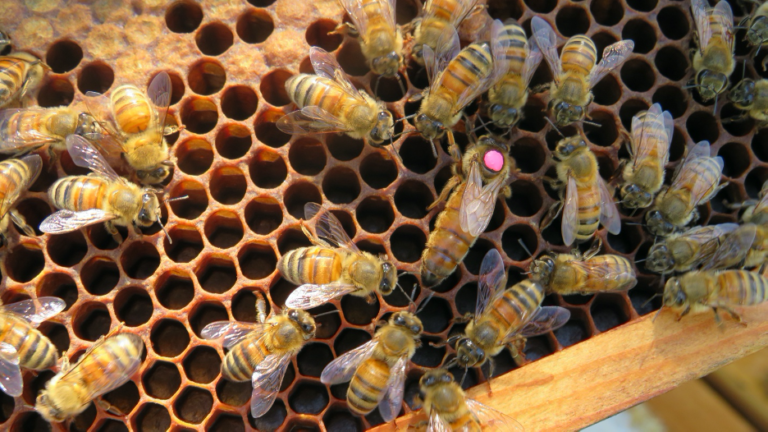K. Wagoner (1), M. Spivak (2), A. Hefetz (3), T. Reams (4) & O. Rueppell (1)
-
- Biology Department, University of North Carolina at Greensboro, Greensboro, USA.
- Department of Entomology, University of Minnesota, Minneapolis, USA.
- George S. Wise Faculty of Life Science, Tel Aviv University, Tel Aviv, Israel.
- Department of Entomology, Texas A&M University, College Station, USA
Abstract
The health of the honey bee Apis mellifera is challenged by the ectoparasitic mite Varroa destructor, and the numerous harmful pathogens it vectors. Existing pesticide-based Varroa controls are not sustainable. In contrast, one promising approach for improved honey bee health is the breeding of hygienic bees, capable of detecting and removing brood that is parasitized or diseased. In three experiments we find evidence to support the hypothesis that stock-specific chemical brood signals are induced by Varroa and Deformed Wing Virus, and elicit hygienic response in the honey bee. By collecting, analyzing, and running bioassays involving mite-infested and control brood extracts from three honey bee breeding stocks we: 1) found evidence that a transferrable chemical signal for hygienic behavior is present in Varroa-infested brood extracts, 2) identified ten stock-specific hydrocarbons as candidates of hygienic signaling, and 3) found that two of these hydrocarbons linked to Varroa and DWV were also elevated in brood targeted for hygienic behavior. These findings expand our understanding of honey bee chemical communication, and facilitate the development of improved hygienic selection tools to breed honey bees with greater resistance to Varroa and associated pathogens.

